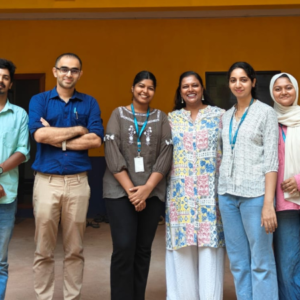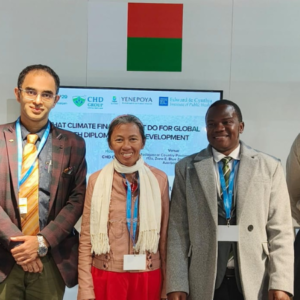Malnutrition is a condition, where deficient or excess nutrient intake or imbalance of required micronutrients is on daily recommendations. The double burden of malnutrition (DBM) concept first emerged in the year,1992 at the International Conference on Nutrition (ICN) conducted by the Food and Agriculture Organization of the United Nations (FAO) and the World Health Organization (WHO). The DBM concept was presented as a “new paradigm,” recognizing the need to separate the treatment facilities and/or prevention of nutritional deficiencies. Because the DBM is linked to the incipient NCD problem and it threatens all low- and middle-income countries (LMICs) where malnutrition is a prevalent hazard for decades. There are a few factors that are responsible for both undernutrition and overnutrition. the factors that influence undernutrition are insufficient intake of essential nutrients, poor absorption of essential nutrients, and/or poor biological utilization of the absorbed nutrients. The consequence of malnutrition will lead to impaired body functions, impaired growth and development, and being underweight. Overnutrition is considered as the excess or imbalanced nutrient intake or reduced basal metabolic rate (BMR) which can constitute impaired body functions and leads to overweight and/or obesity, which increases incidences of NCD. The consequences of the double burden of malnutrition are robust and most of it manifests across the lifetime. Maternal and child undernutrition holds half or one-third of the global child deaths. Child undernutrition contributes to 73% of the under 5 mortality rates. In LMIC countries poor sanitation, poor access to safe drinking water, crowding, etc enhance the consequences of the double burden of malnutrition.
Undernutrition is exhibited in four broad forms of nutrition such as wasting, stunting, underweight, and micronutrient deficiencies. Wasting manifests, the low weight for their height, reflecting acute undernutrition. acute malnutrition can be classified into Moderate Acute Malnutrition (MAM), Severe Acute Malnutrition (SAM), and Global Acute Malnutrition (GAM). Moderate Acute Malnutrition (MAM) is calculated by moderate wasting WFH < ‐2 z‐score and > ‐3 z‐score for children 0‐59 months (or for children 6‐59 months, MUAC <125 mm and > 115 mm). severe Acute Malnutrition (SAM) is calculated by severe wasting WFH < ‐3 z‐score for children 0‐59 months (or for children 6‐59 months, MUAC <115 mm) or the presence of bilateral pitting edema. Global Acute Malnutrition (GAM) is the presence of both MAM and SAM in a population. A GAM value of more than 10 percent indicates an emergency. stunting is defined as the percentage of children, aged 0 to 59 months, with < ‐2 z‐score and > ‐3 z‐score whose height for age is below the median of the WHO Child Growth Standards (WHO).
Underweight is characterized by low weight for age. An underweight child may be stunted or wasted, or he/she may reflect both of the characteristic patterns of stunting and wasting. Micronutrient deficiencies are termed as the lack of essential vitamins and minerals that are essential for appropriate body functions. it includes the production of enzymes, balancing the hormones, and other substances which are required for the growth and development of an individual.
The Concept of the Global Hunger Index in undernutrition:
A global hunger index is a tool designed to measure and track hunger at global, regional, and national levels. It is calculated each year to plan and implement nutritional programs based on hunger priorities. The GHI score is calculated with the help of 4 indicators including the proportion of undernourished in the population, prevalence of wasting in children under 5 years, the prevalence of stunting in children under 5 years, and under-five children mortality rate. The standardized GHI ranks countries on a 100-point scale and the score has been divided into five levels 0-9 indicates a low level, 10-19.9 indicates a moderate level, 20-34.9 indicates a serious level, 35-49.9 indicates the alarming level and above 50 indicates extremely alarming level.
International approaches to end malnutrition:
To end malnutrition globally, United Nations Secretary-General Ban Ki-moon launched Zero Hunger Challenge in 2012. The Zero Hunger vision implies a few elements from within the Sustainable Development Goals (2), which involve ending hunger, eliminating all forms of malnutrition, and building inclusive and sustainable food systems to end malnutrition globally. Ending hunger and malnutrition by 2030 was the agenda of this zero-hunger initiative. The United Nations (UN) General Assembly manifested an action on Nutrition from 2016 to 2025 on 1 April 2016. It has set a fixed time period for the implementation of the policies and commitments framed at the Second International Conference on Nutrition (ICN2) to meet the global nutrition needs and targets by 2025. A comprehensive approach from the international agencies such as WHO, UNICEF, UN, regional, national authorities, the government, and public-private organizations is essential to end malnutrition and meet the nutritional needs of the population.
Malnutrition status of India:
India ranks 101st out of 116 countries on the global hunger index. with a score of 27.8 which indicates a serious level of global hunger index. National Family Health Survey (NFHS 5) 2019-21, the 5th in the series conducted in India has reflected no significant improvement in the area of health and nutritional status of the Indian population. The latest nutritional status data reveals that 7.7% of children are severely wasted, 19.3% are wasted and 35.5% are stunted. Also, 3.4% of children are exhibits the characteristics of overweight which was less than 2.1% in the NFHS-4 survey. A notable change has been observed within a short period. Anemia among children under 5 has become worsen from the previous prevalence rate, which increased up to 10% from NHFS 4 to NHFS 5. Incidence of anemia among women of reproductive age group and children under 5 is another public health challenge. 57% of women in the reproductive age group suffer from anemia. Unemployment, poverty, recurrent disasters, poor sanitation and hygiene, no access to safe drinking water, and lack of awareness are a few reasons for the existing malnutrition status. Comprehensive actions at local and national levels must be implemented to overcome nutritional crisis and to meet the basic nutritional needs of the population.
Dr. Nitha Jacob is Assistant Lecturer and MPH Programme Co-ordinator at the Edward & Cynthia Institute of Public Health at Mangalore.
-
Dr Nitha Jacobhttps://eciph.in/author/nitha/
-
Dr Nitha Jacobhttps://eciph.in/author/nitha/
-
Dr Nitha Jacobhttps://eciph.in/author/nitha/
-
Dr Nitha Jacobhttps://eciph.in/author/nitha/





